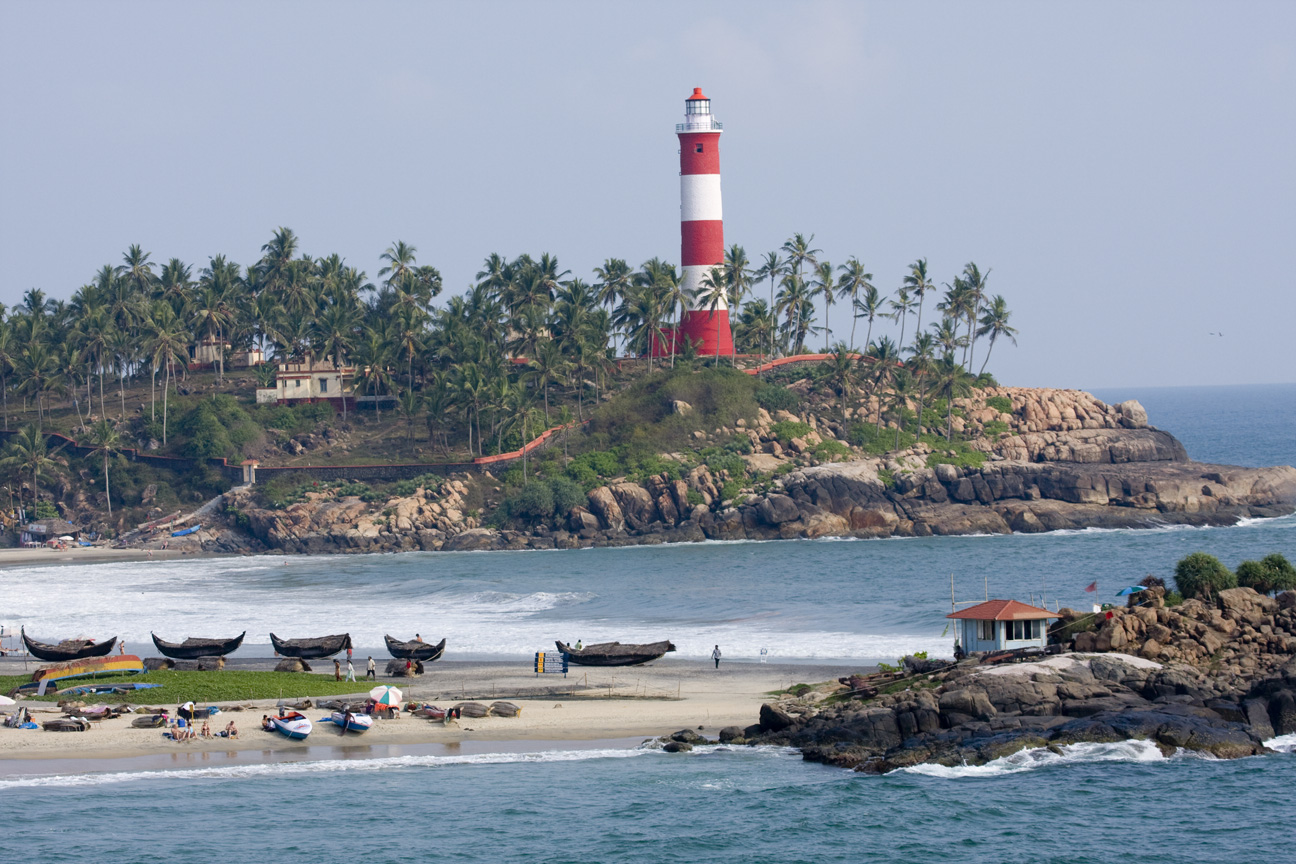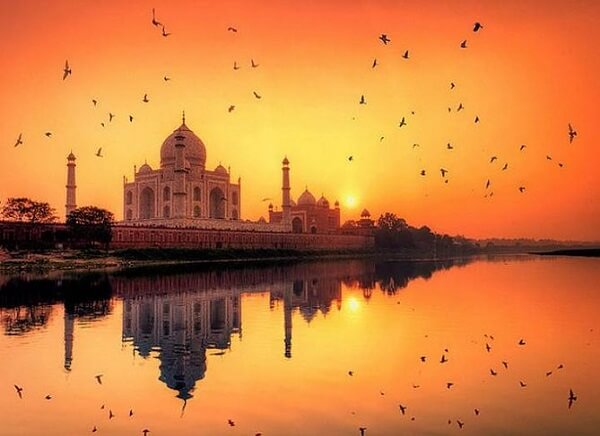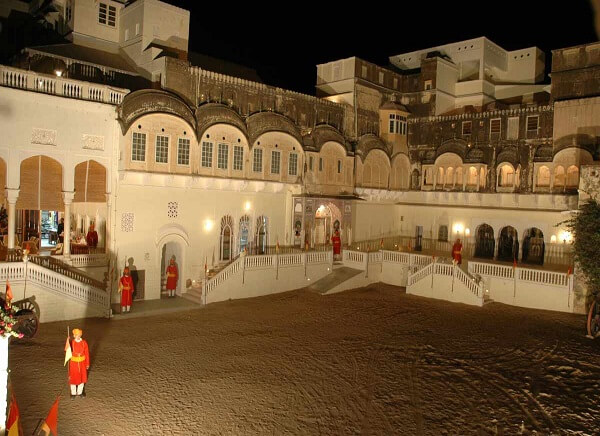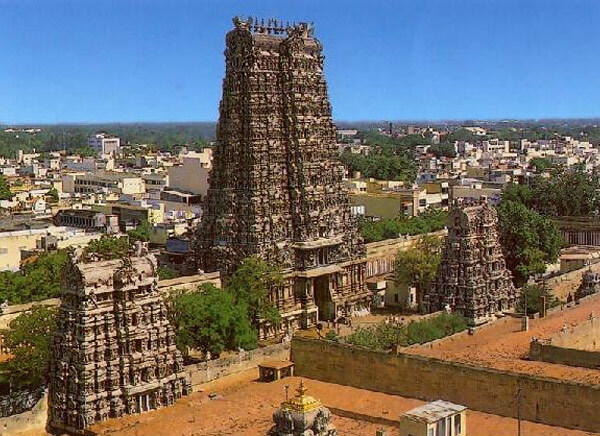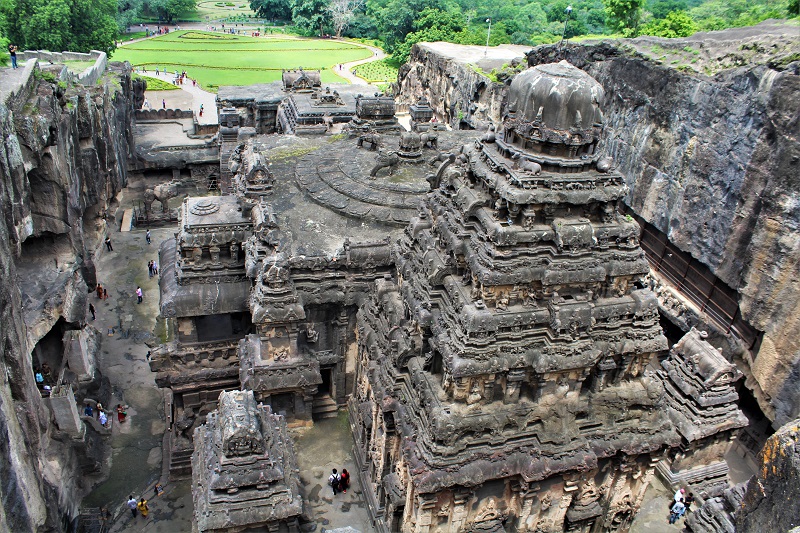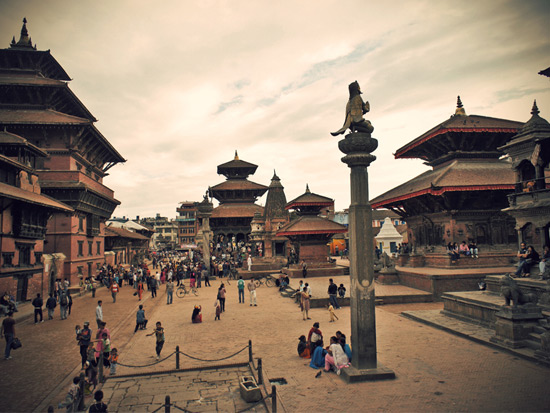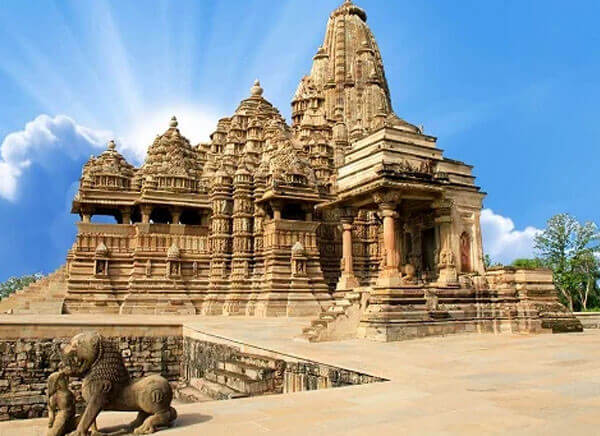Popular Stepwells in India
Baoli, commonly known as step-wells in India, are wells with descending steps. Especially in the western part of India, Stepwells are a very common phenomenon and it can be traced back to the Indus Valley Civilisation. These step wells have their practical value and are not merely meant for an addition to the structure. Their step-wells are created by digging up and by going deep into the Earth and these Baoli act as water reservoirs for year long. The steps which led into the step-wells are used to make the collection more in an easy and comfortable way and it also served worship purposes.
Though the archaeological evidence shows that there are thousands of Baoli in India in the ancient past and even today there are more than 2000 surviving Bali in India. Although they are not in use, they still retain water and are treasured pieces of architecture from various eras. Here we have shortlisted some famous step-wells which will surely pique your interest. Get here a list of an ancient stepwells in India.
Chand Bawri, Rajasthan
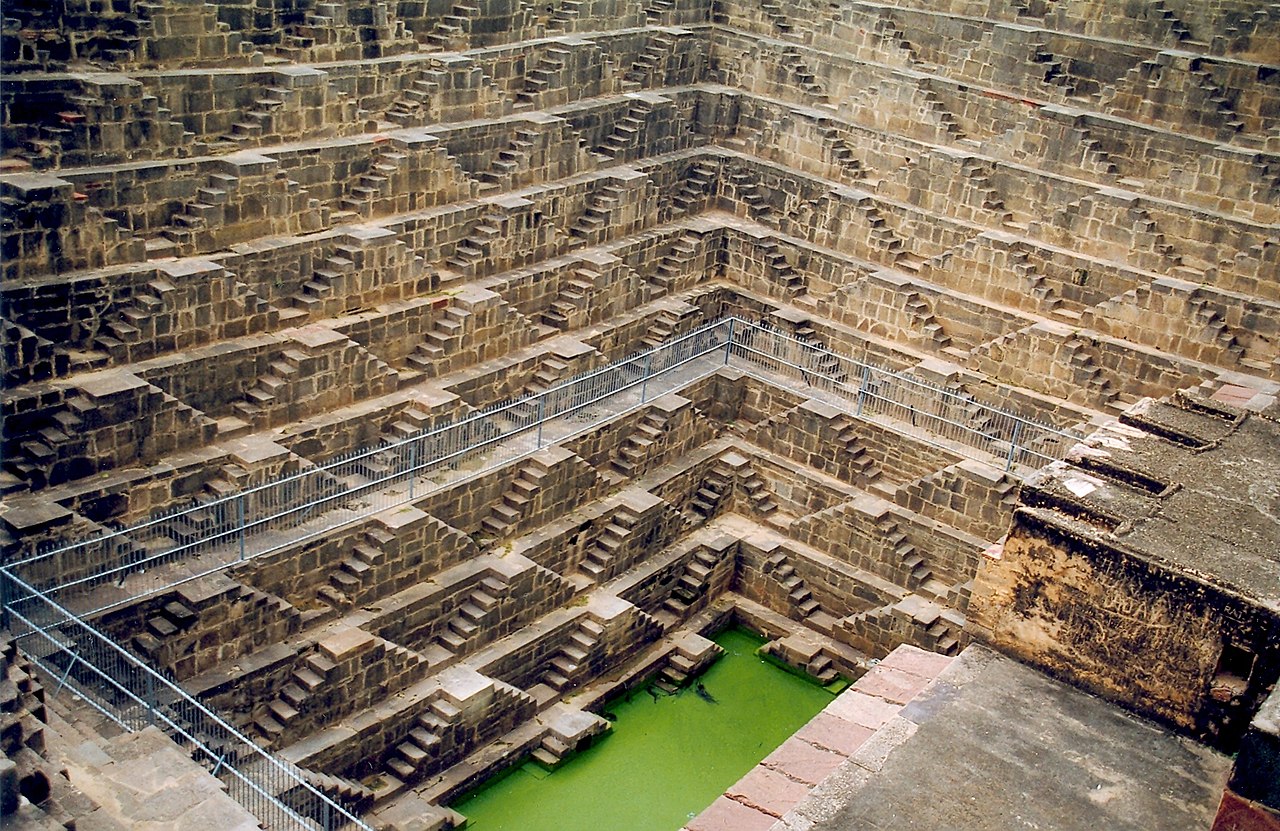
Located in the Abhaneri village of Rajasthan, Chand Bawri is one of the most popular stepwells in the whole of North western India. It attracts thousands of tourists every year due to its beautiful architecture. This famous stepwell is built by King Chanda of the Nikumbh dynasty during the 9th century AD. This huge bawri has 3500 steps which will take you as deep as 20 meters into the well. This makes this baoli the deepest baoli in the country. Ancient people believe that Chand Baoli was built in order to serve as a source of water and it is dedicated to the Goddess of Joy and Happiness. During the reign of Kind Chanda, this place was used by a royal family member to socialize themselves with local people and the step-wells remained a lot cooler when compared with its surrounding. Chand bawri is 13 floors of step-wells and its looks amazing from a distance.
Also Read - A List of Popular UNESCO World Heritage Sites
Adalaj Bawri, Gujarat
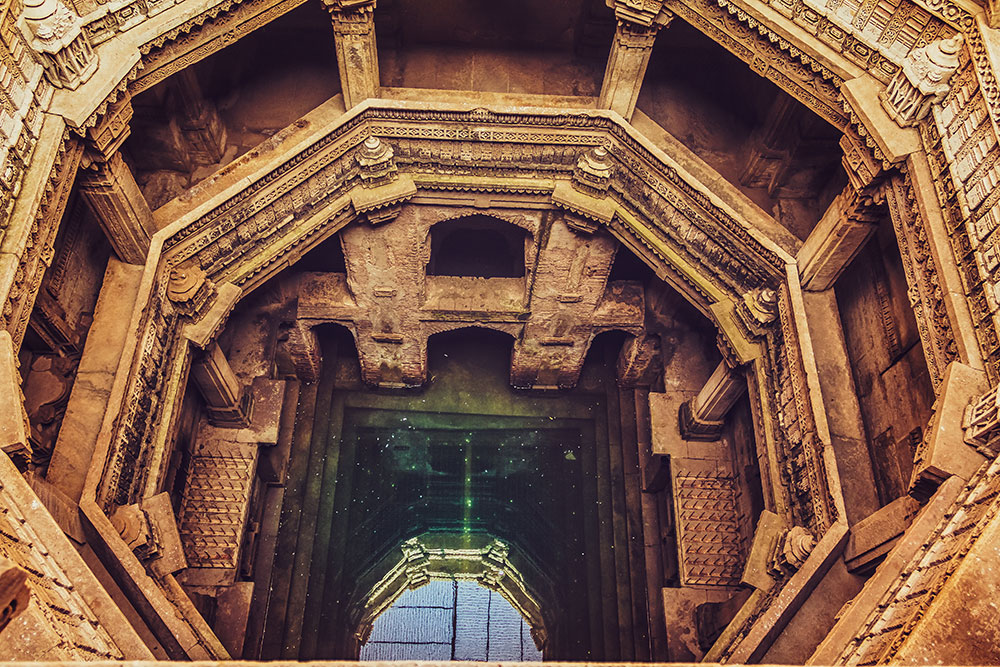
Adalaj ki Bawri or Rudadevi stepwells is one of the most famous bawri in India which is located in the village of Adalaj. Situated near the city of Gandhinagar in Gujarat, this baoli is built with sandstone and it is a perfect example of Solanki architecture. These five stories deep stepwell windows are decorated with minutely carved brackets with Hindu and Jain carved images on the wall making it a perfect tourist spot. As per the ancient text, Adalaj bawri was built by Queen Rudadevi in the memory of his husband Rana Veer Singh in 1498.
You May Know - Best Places to Visit in India in October
Rani ki Vav, Gujarat
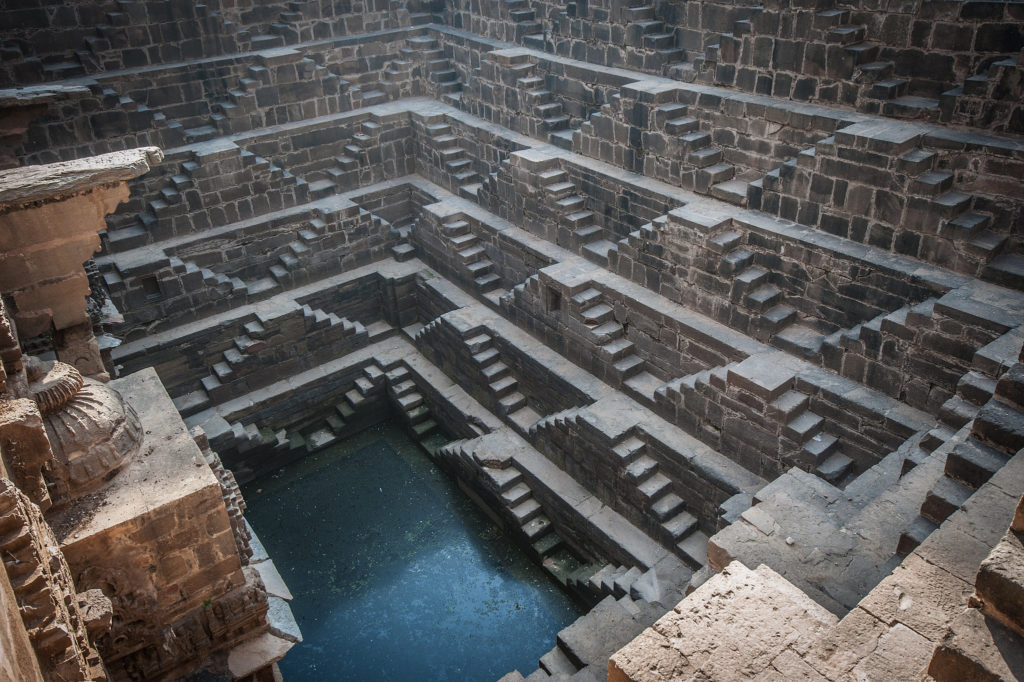
Situated in Patan in the state of Gujarat, Rani ka vav is a World Heritage site under UNESCO. This stepwell was built in the 11th century during the reign of the Chalukyas dynasty and it is located near the Saraswati River. According to legends, it was said that this Bawri was built by Uday Mati, in the memory of his husband Bhima I. The Bawri reflects the architecture of the Maru-Gurjara style. There are engraved images of different avatars of Vishnu on the walls for stepwells and they were often used as a place for worship. This baoli has 7 steps and each one of them is adorned with religious imagery and magnificent multiple structures. The handiwork and the architecture of this baoli made it stand apart from other baoli in the country.
Agrasen ki Baoli, New Delhi
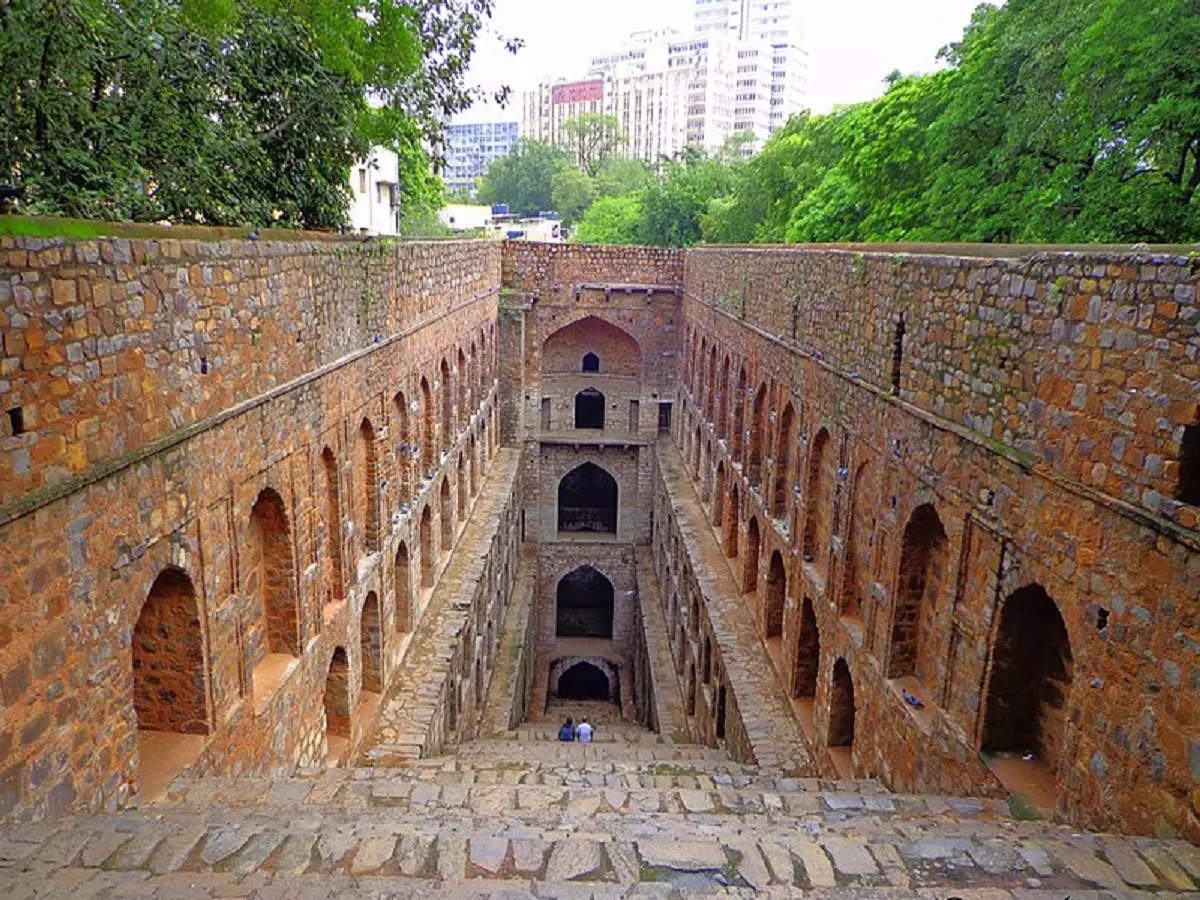
This baoli is one of the most popular step wells in India. Situated near the Connaught place in Delhi, this baoli has 108 steps and three levels which will take you into the well. By looking at the architecture of Baoli, you can believe that it was built during the reign of the Tughlaq or Lodi Dynasty. As per ancient text, this baoli was built by Maharaja Agrasen singh, who himself has different stories of his origin and his name is also found in the famous epic Mahabharat. Today this baoli is under the Archaeological Survey of India.
Also Read : What are the Offbeat Things to Do in Delhi
Popular Delhi Attractions
- Red Fort
- Qutub Minar
- India Gate
- Jantar Mantar
- Lotus Temple
- Raj Ghat
- Humayun Tomb
- Dilli Haat
- ISKCON Temple
- Jama Masjid
- Akshardham
- Connaught Place
- Tomb of Safdarjung
- Garden of Senses
- Hauz Khas Complex
Gol Baoli, Haryana
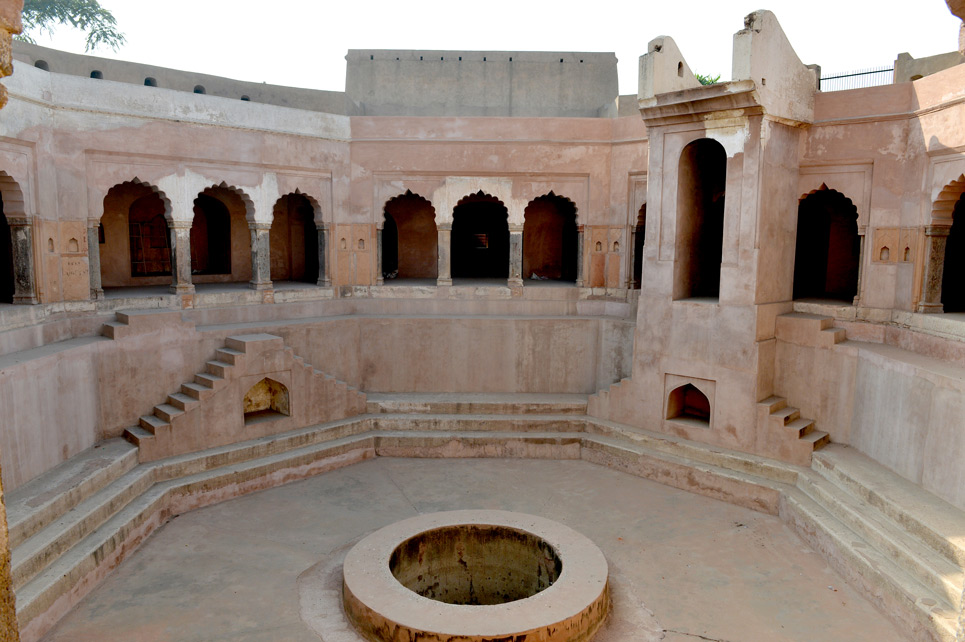
Situated in the Farukhnagar town of Haryana, Gol baoli was constructed by Ghaus Ali Shah, who was a local chief under Farrukh Siyar who belong to the Mughal dynasty in the 18th This baoli is octagonal in shape with a stone-made step that will take you into the tank which is in the centre. This baoli was used by the women of the empire who used to take baths here and there is also a chamber where they can relax. Today, this baoli is protected by the Archaeological Survey of India.
Pushkarani, Karnataka
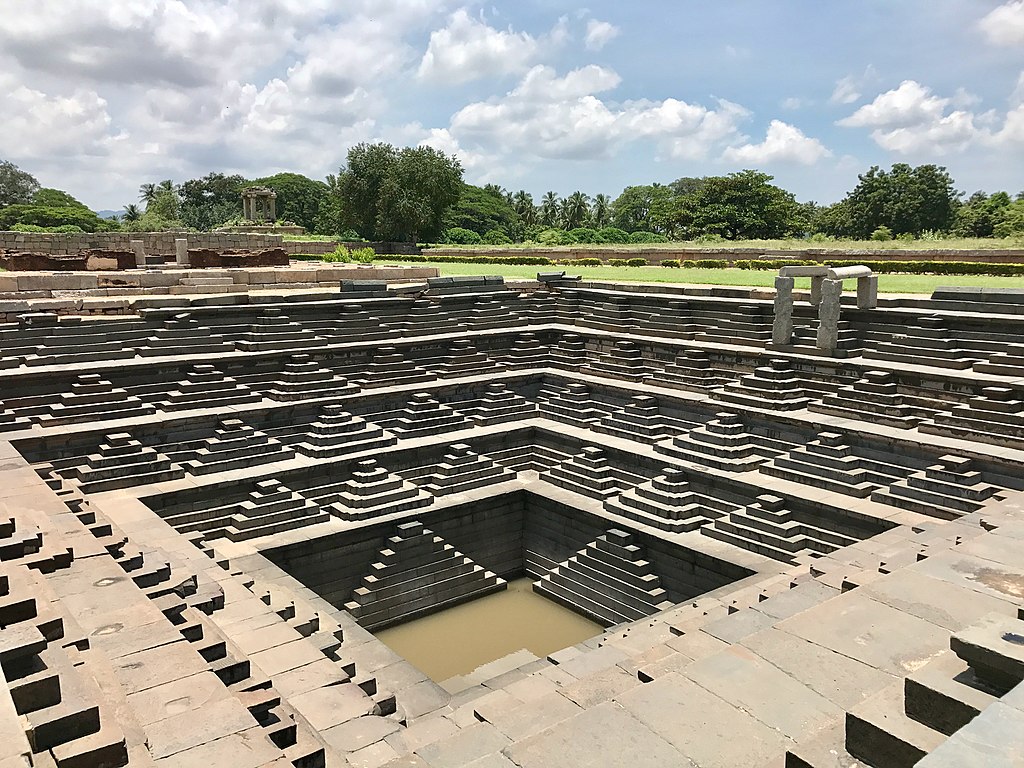
Located in Hampi Karnataka, Pushkarani is a baoli that is situated next to the temples. The roots of this baoli can be traced back to the Vijayanagara empire and it was used then as a place of worship by the local people of Hampi. Even during that day, the famous annual boat festivals were hosted in this water tank. Today, this baoli is in tattered forms but it does not fail to attract visitors. The most venerable stepwell is the one which is located in the Royal Enclosure, near the Hazara Rama Temple.
Also Read - Popular India Places to visit
Mata Bhavani’s Vav, Gujarat
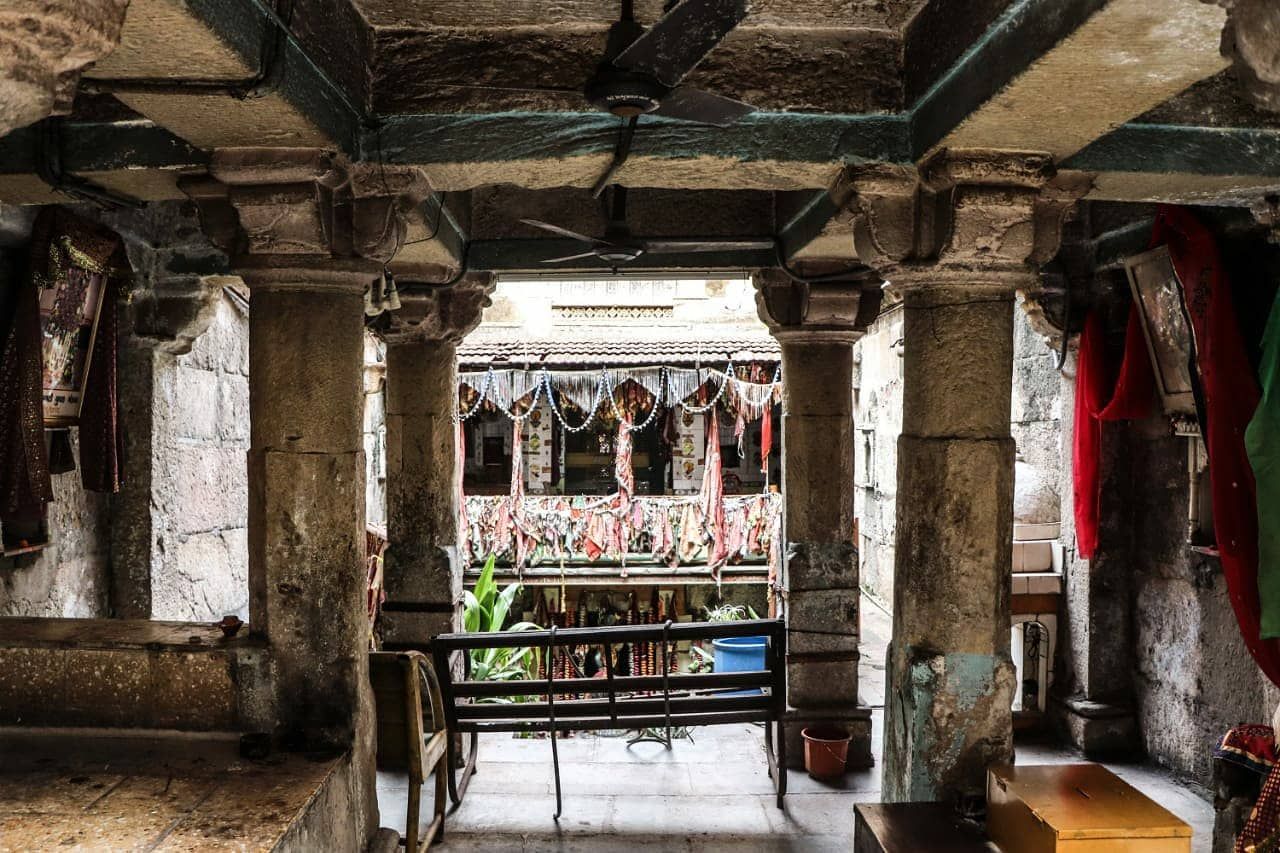
Situated in Ahmedabad Gujarat, Mata Bhavani Vav is one of the oldest step-wells in India. The ancient text said that it belongs to the period of the Chalukyas dynasty and was built around the 11th This baoli has three stepwells and there is a shrine of Mata Bhavani, which was built much later after the Baoli. Though when it comes to architecture, it does not match the architecture and aesthetics when it comes to comparing it with other step wells, but still, it is a significant step well.
Rajon ki Baoli, New Delhi
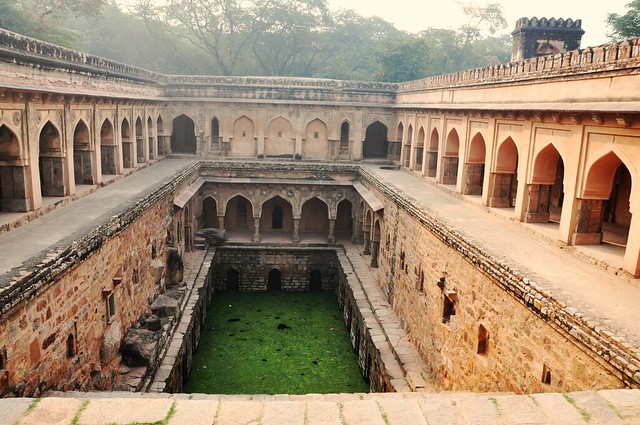
Situated in the Mehrauli Archaeological Park in New Delhi, this baoli can be traced back to the 16th This famous stepwell was built was Daulat khan for the use of Mason or Rajmistries. Parallel to this baoli, there is a beautiful mosque that was used by Daulat khan for peace of mind. This baoli is rectangular in shape and it has four levels along with steps that will take you into the well. Today this baoli is in its shattered form but it is a significant architecture of Medieval India.
Read Also: Top 5 Places To See on a One Day Delhi Tour
Want to visit Delhi in a luxurious way : 3 Nights 4 Days Delhi Tour Maharajas’ Express Train
Delhi Travel Guide
- How to Reach Delhi
- Culture of Delhi
- Street Food in Delhi
- Best Time to Visit Delhi
- Things to do in Delhi
- Museums in Delhi
- What to Wear in Delhi
- Churches in Delhi
Surya Kund, Modhera Stepwells, Gujarat

Situated inside the premises of the famous sun temple of Modhera Gujarat, Surya Kund baoli is one of the beautiful baoli of India. This famous Sun Temple was built around the 11th century during the reign of Bhima I of the Chalukyas dynasty. This stepwell is rectangular in shape and it has four terraces along with the step which takes you into the reservoir. This baoli is quite extensive and it has more than 108 miniatures of Lord Ganesh, Vishnu, and several local deities. It was designed in such a way that it was not only used for the storage of water but also for performing religious ceremonies.
Today, the Sun temple is under the protection of the Archaeological Survey of India, and this Surya Kund received thousands of tourists every year from the country.
Toor Ji ki Jhalra, Rajasthan
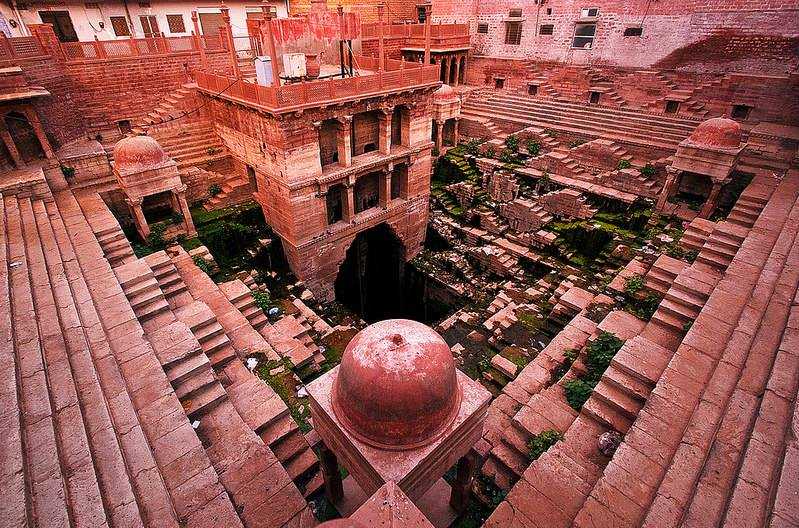
Situated in Jodhpur Rajasthan, Toor ki Jhalra baoli is act as a source of water for locals. This baoli is stored recently and its roots can be traced back to the 18th The baoli was built using red sandstone and there is an engraving of various animals and deities on the walls of it. This stepwell is considered one of the finest step wells in the country. A few years back it was full of debris and garbage, but now it has been cleaned up and today it is visited by locals and kids who take a dip in the aesthetics of the 18th century.
Jodhpur Travel Guide
- Best Time to Visit Jodhpur
- How To Reach Jodhpur
- Shopping in Jodhpur
- Things To Do in Jodhpur
- Tourist Attractions in Jodhpur
- Where to Stay in Jodhpur
Suggested Tour :
Jachcha Ki Baoli, Rajasthan
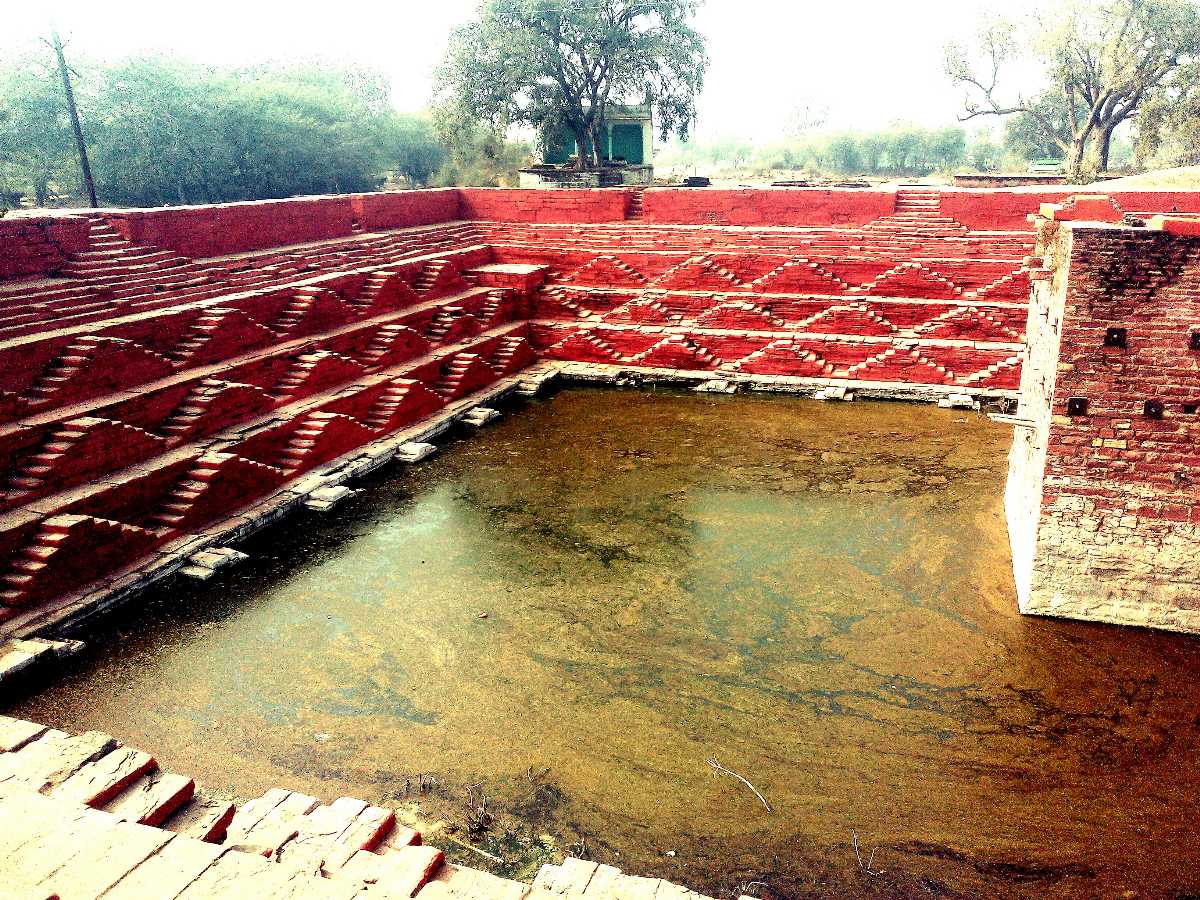
Located in the Hindaun city of Rajasthan, Jachcha ki Baoli is the largest step well in India. The roots of this baoli can be traced back to the 14th century and it was built by Lakkhi Banjara. According to legend, during the initial excavation of this baoli, no water had appeared and it the rumored that a local saint has asserted that when a Jachcha (pregnant woman) gave birth to a child this baoli will be filled with water and from there this stepwell got it names. There are several anecdotes related to it and the most famous one is that this baoli is so pure that you do not require any soap or detergents to clean the clothes.
Dada Harir Stepwells Gujarat
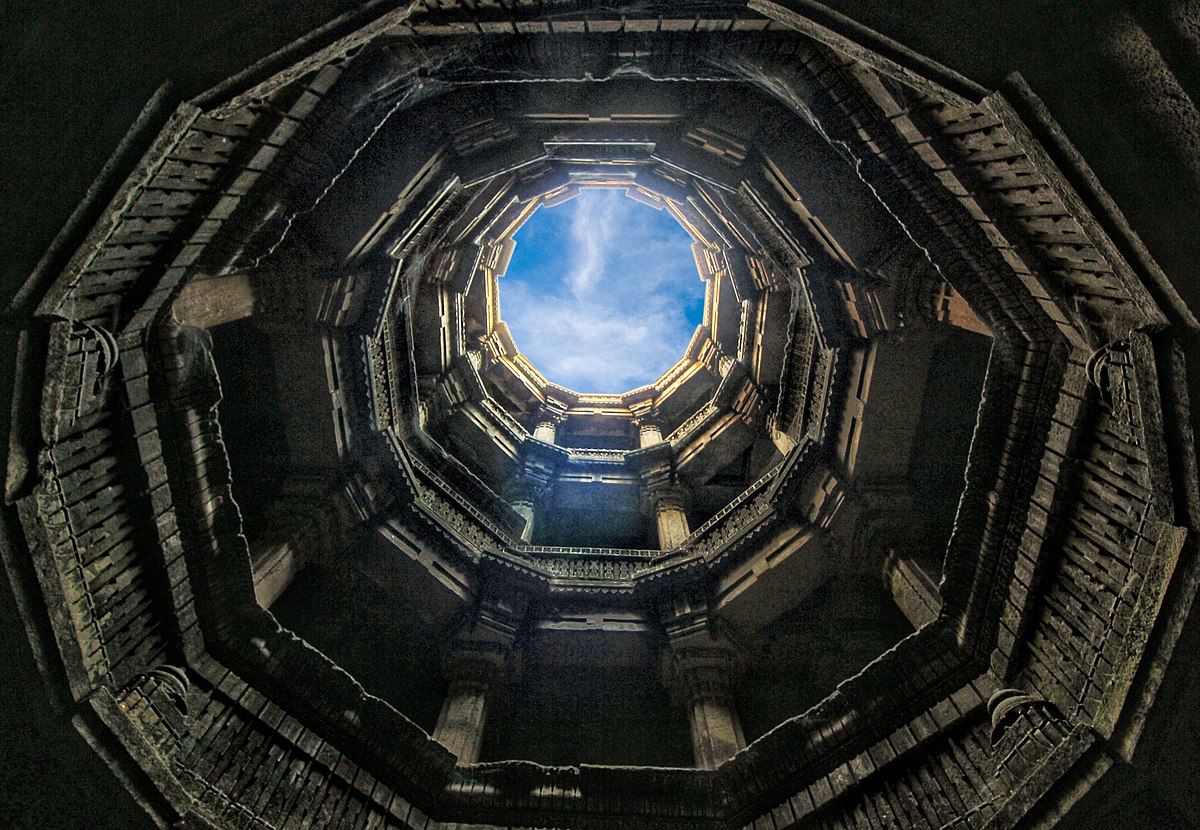
Built in the year 1499AD by Dhai Harir, a household lady of Sultan Bergara Harem, Dada Harir stepwells were initially made as a retreat during the hot summer season. No matter what the weather is, whether it’s summer or winter, the temperature is always cooler within the step-wells. It is located in the Asarwa area of Ahmedabad Gujarat. This baoli is a perfect example of Solanki architecture and it is five stories deep. It is octagonal in shape and according to an inscription, Dhai Harir spent (3,29,000 Mahmudis) around 3,00,000 rupees during 1499AD to build this baoli. At the ground level you might not find out the bygone era architecture of it, but as you arise one stair ahead there you can see the carving of reflecting sunlight.
Bara Imam Bara, Shahi Baoli Uttar Pradesh
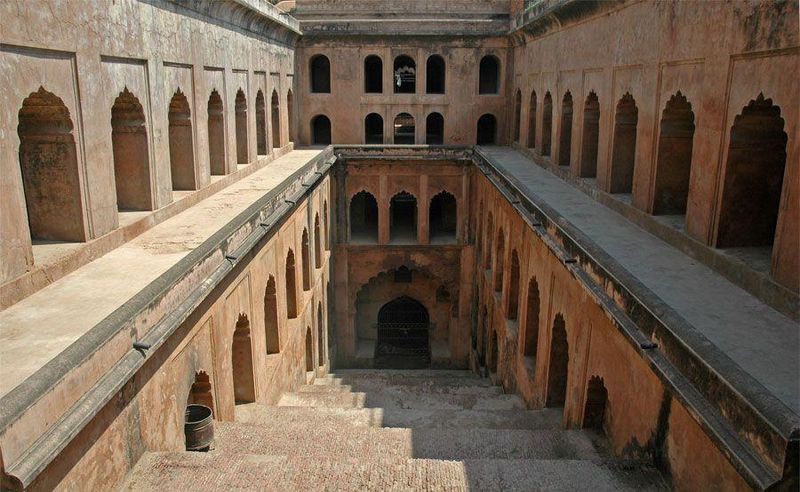
Located in Lucknow, the capital city of Uttar Pradesh, Shahi baoli was built in the year 1784 by Nawab Asif-Ud-Din-Daula. This stepwell is an example of Indo-Islamic architecture and it acts as a water reservoir. This baoli has five stories and it served cold water to the people but nowadays it only acts as a tourist spot.
Raniji Ki Baoli, Rajasthan
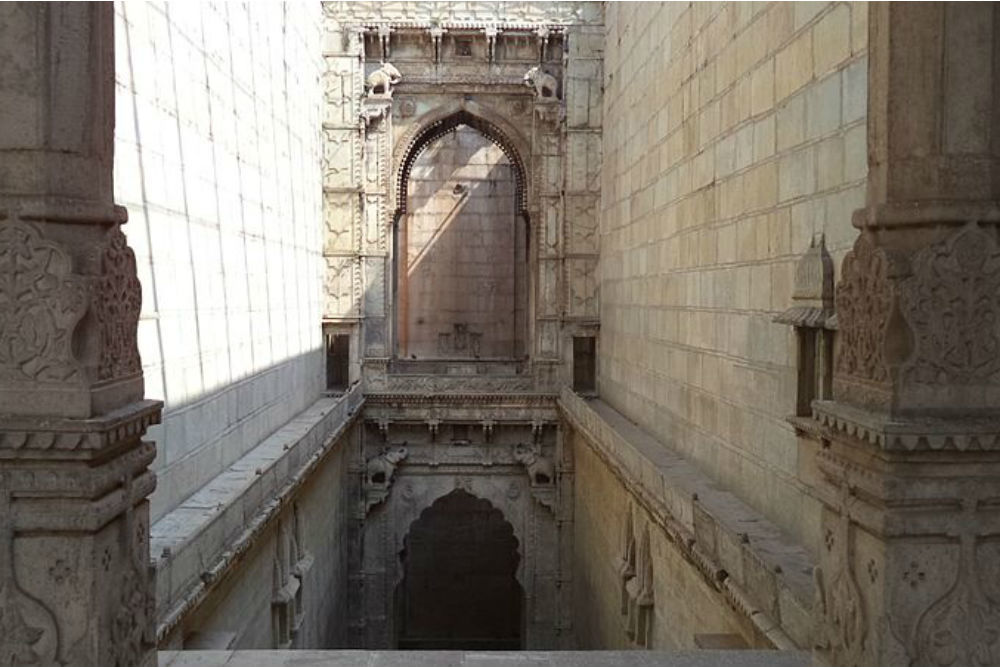
Located near Kota Rajasthan, Raniji ki Baoli is ancient step-wells in India. It was built in the year 1699 by Rani Nathavati Solanki, who was the younger queen of Rao Raja Anirudh Singh. It is 46 meters deep with some beautiful engraving on the pillars and gate. This baoli is a multistorey building with a place of worship on every floor.
Rajasthan Travel Guide
- History of Rajasthan
- Best Time to Visit Rajasthan
- How to Reach Rajasthan
- Weather in Rajasthan
- Things to Do in Rajasthan
- Places to See in Rajasthan
- Weekend Getaways in Rajasthan
- Cuisines of Rajasthan
- Rajasthan Fast Facts
- Festivals in Rajasthan
Panna Meena ka Kund, Rajasthan
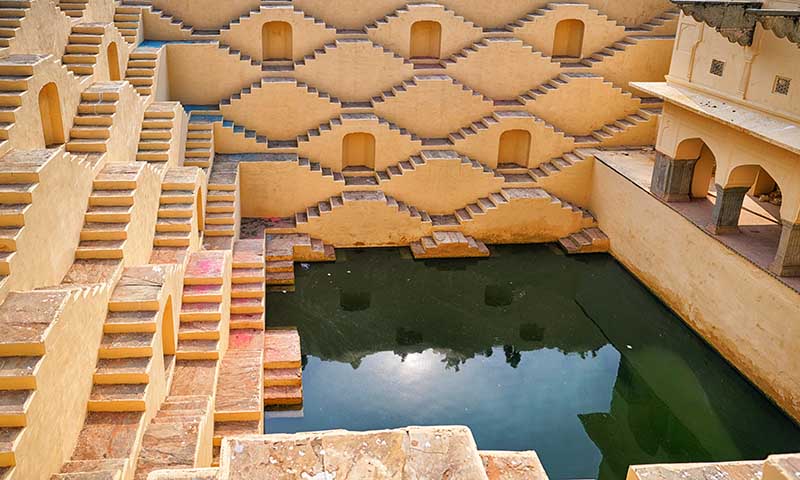
Pink city is famous in India because of several pieces of architecture that it holds, and Panna Meena is one of the ancient step-wells which is quite an unexplored and impressive one. This baoli was built in the 16th century in Jaipur and it has 1800 stairs. It was built to supply water for drinking and other purposes to the locals. This baoli was especially used during the summer days and during crop irrigation. It was designed in such a way that it also acts as a community center for the society who lived around the Kund. People often sit on the stair of the baoli and exchange conversation.
Stepwells which we have mentioned above is a must-visit because it’s either a significant structure of its era or it has magnificent architecture. This baoli was the complete structure and they serve the basic need of the locals. Almost all of them were built during the medieval era. Over a period of time, a lot of baoli have been neglected because they shattered or they run dry, but they are that basic structure that tells us a lot about their respective ages.
Also Read : Walled City Jaipur Designated as New UNESCO World Heritage Site
Popular Jaipur Attractions
- Amer Fort
- City Palace
- Hawa Mahal
- Jantar Mantar
- Jal Mahal
- Nahargarh Fort
- Jaigarh Fort
- Galta ji Temple
- Birla Temple
- Govind Dev ji Temple
- Moti Dungri Temple
- Kanak Vrindavan Valley
- Sisodiya Rani Ka Bagh
- Vidhyadhar Garden
- Albert Hall Museum
- Dolls Museum
Popular Tour Packages to Explore the Heritage Sites in India :


